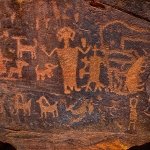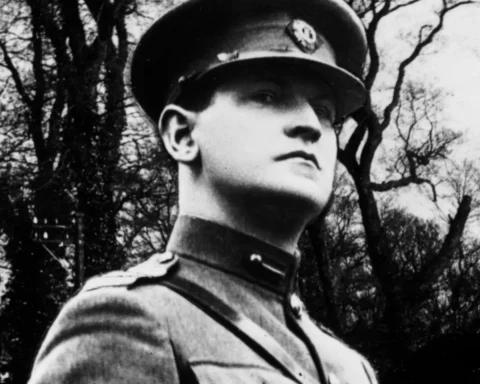- History plays a significant role not only in understanding the past but also the present and future. The events of the past can shape our recent or following time. This time can have an influence on our behavior, views, and even on culture.
Although history, in fact, is our best teacher because we can either learn from it or repeat the same mistakes all over again. While culture, on the other hand, is more like a ‘traditional leader’. And by following it we can maintain our own identity.
Certain events can break the flow of culture. Examples include the death of the last practitioner of traditions. Another is one country’s oppression over another. These events can lead to the loss of cultural knowledge.
They can also result in the suppression of cultural identities. Communities may struggle to preserve their traditions. Such disruptions have long-lasting effects on cultural heritage.
In other words, it will remain in the past and people will stop practicing it. One of the greatest factors which can affect both culture and history is war. Certainly which can destroy cultures and history.

However, by storytelling, we can save our culture . One of the greatest examples in which a certain culture dominates another in history is the war between Euro-Americans and Native Americans. The book called Ceremony is most significant because it preserves both culture and history.
This essay attempts to analyse the significance of history and war by using Patricia Nelson Limerick’s The Legacy of Conquest in the cultural understanding of Leslie Marmon Silko’s Ceremony.

The story of Ceremony is about a young Indian, Tayo. He is a Native American soldier in WWII. Tayo thinks of his family during combat. He hallucinates, seeing a dead Japanese soldier as his uncle. This blurs the lines between enemy and kin.Tayo struggles with his identity and cultural trauma.
The thought of shedding ‘his own blood’ makes Tayo sick. His comrades try to convince him about the false image of his uncle. They reason with him, stating it must be impossible to kill someone who isn’t even there
As time is passing during the war, Tayo will have to face the death of his cousin, Rocky. After experiencing the death of his loved ones, the main character becomes sick. People try to take care of him in a Veteran’s Hospital.
Here he manages to have as much of his strength back. The strength and courage which is enough for him to go home to the Laguna Pueblo reservation.

At home, Tayo feels guilty about his cousin and uncle’s deaths. He believes the drought is punishment for his prayer in the Philippines. Tayo battles his sickness. He realizes the war affected not only him but also his childhood friends. Harley, Leroy, Emo, and Pinkie cope by drinking alcohol and reminiscing about the history of war.
After having seen Tayo’s condition, his grandma introduces him to a medicine man called Ku’oosh. The medicine man performs a ceremony which does not work, so he sends Tayo to another ‘healer’, Betonie, to a place called Gallup, where they decide to perform a new ceremony.
The old medicine man of Gallup sends Tayo to find his uncle’s cattles. However, after having found them Tayo becomes calm and he feels that the ceremony is almost finished. At the end, the protagonist finds his peace. And ‘medicine’ which are resulting from nothing else but from his practice of Native-American traditions and culture.

The book calls our attention to the effects of wars. On one hand, they were treated as white people as long as they were ‘allies’ “I put on that uniform, and then by God I was a U.S. Marine and [people] came crowding around” (Silko 40) and they were also seen as the ‘heroes’, “the patriots who had fought to defend the interests of their people” (Limerick 217)
but later, people wanted to get rid of Indians. Thus, war caused depression which made Native Americans sick, such as Tayo, or turned them into alcoholics, such as Harley. Although Indians had a sort of experience about battles, which people call “intertribal struggle [s]” (Limerick 216), they were not prepared for the greatest war which they had to wage against the newcomers.
As a result of this ‘new war’, a certain kind of anger and regret started to overwhelm the Indians. “They blamed themselves for losing the new feeling; they never talked about it, but they blamed themselves just like they blamed themselves for losing the land the white people took” (Silko 43).
There was a shared pain and suffering which connected Indians somehow which “[they] can’t cure like [they] used to [,]… not since the white people came.” (Ceremony 38). The atrocities and wars lasted so long that the newcomers became a part of Indian culture, and even appeared in their prophecies “Caves across the ocean in caves of dark hills white skin people like the belly of a fish covered with hair” (Silko 135).
The newcomers did not only become a part of Native-American culture but they wanted to erase it, Indians had to go to school in order to receive ‘proper’ and ‘normal’ education “Shamed by what they taught… in school about the deplorable ways of the Indian people; holy missionary white people… wanted only good for the Indians, white people… dedicated their lives to helping the Indians” (Silko 68).
Indians were trying to cope with this struggle and living up to newcomers’ traditions, they started to assimilate, for example, “a classic instance of Indian adaptability, the Navajos had shifted to herding the sheep, goats, and horses… they were encouraged to develop even larger herds” (Limerick 205). Cattle breeding became a necessity because of the draught, and it also became a part of Indian culture.
Although this trial and assimilation process was important, the “range was badly overgrazed and contributed to the general problems of “Depression era dust storms.” (Limerick 206). Even though Indians tried to assimilate by integrating the provisions of newcomers, such as horses and cattle, into their own culture still, this was not enough for Euro-Americans and they wanted full domination.

Newcomers not only wanted to dominate the land of the Indians but also their traditions, habits, and beliefs. Although, at first, Indians were encouraged to breed cattle, “the herds had gone past the carrying capacity of the land, and the herds had to be reduced… [and] clarity ceased” (Limerick 206), which meant that people had to give up their identity, wealth and security.
Cattle were essential for Native-Americans, especially when Tayo practiced the ceremony–because ceremonies were the bases of Indian traditions, they practiced them in order to honour the spirits and ask for guidance from them.

Culture did not only vary between newcomers and Native Americans, but between Indians as well. There were many differences between tribes, which can originate from their different habits and views.
It is important to know that Laguna Pueblo Indians were peaceful and “Pueblo peoples were farmers, with the types of farming and associated traditions of property ownership varying among the groups”.
Knowing the main character’s identity can help us understand why Tayo is not rebelling against the white people, and why he lets other people kill his friend Harley. According to Laguna Pueblos, violence could not be the remedy for violence and peacefulness served as a part of their culture.
Indians were not really fighting against white people because they were the ones who created them according to their prophecies. In addition, according to their prophecy, white people achieved domination over the land and culture of Indians just because Native Americans let them.
On the other hand, the newcomers could not have full domination because they could not ruin a culture in which they took an essential part. Thus, as long as someone is telling the stories of Native Americans, their culture cannot be fully possessed by anyone else but them.
As a person who was born as Laguna Pueblo, it is the duty of Leslie Marmon Silko to practice her culture and to tell the history of her people. Storytelling is one of the best ways to maintain one’s traditions and identity and to secure the survival of one’s culture “You don’t have anything if you don’t have the stories” (Silko 2).
The problem with Native-American history and culture is that mainly they were written and decided by outsiders and “anyone… became an ‘expert’ on the life of the Indian, all except the Indian himself.” (Limerick 218).
Ceremony” offers insight into the world from the perspective of Native Americans. It allows us to understand the impact of the war between Native Americans and Euro-Americans. Through the eyes of the characters, we gain knowledge and perspectives previously unseen.
The novel sheds light on the effects of colonialism and cultural conflict. It deepens our understanding of the lasting trauma. The trauma which Indigenous communities.experienced.
Works Cited
Limerick, Patricia Nelson. The Legacy of Conquest: The Unbroken Past of the American West. New York: Norton, 1987.
“Pueblo Indians”. Encyclopædia Britannica. Online Encyclopædia Britannica Online
Encyclopædia Britannica Inc. <http://www.britannica.com/topic/Pueblo-Indians>.
Shipler, David K. “Preface”. Crossing Boundaries In The Americas, Vietnam, And The Middle East: A Memoir. Jon Young. Eugene, Oregon: Resource Publications, <https://books.google.hu/books?id=Y8oSBQAAQBAJ&printsec=frontcover&source=gbs_ge_summary_r&cad=0#v=onepage&q&f=false >
Silko, Leslie Marmon. Ceremony. New York, N.Y.: Penguin Books, 1986. Print.
Weiser, Kathy. “Pueblo Indian Tribes – Oldest Cultures In The United States”. Legendsofamerica.com. N.p. <http://www.legendsofamerica.com/na-puebloindians.html>











